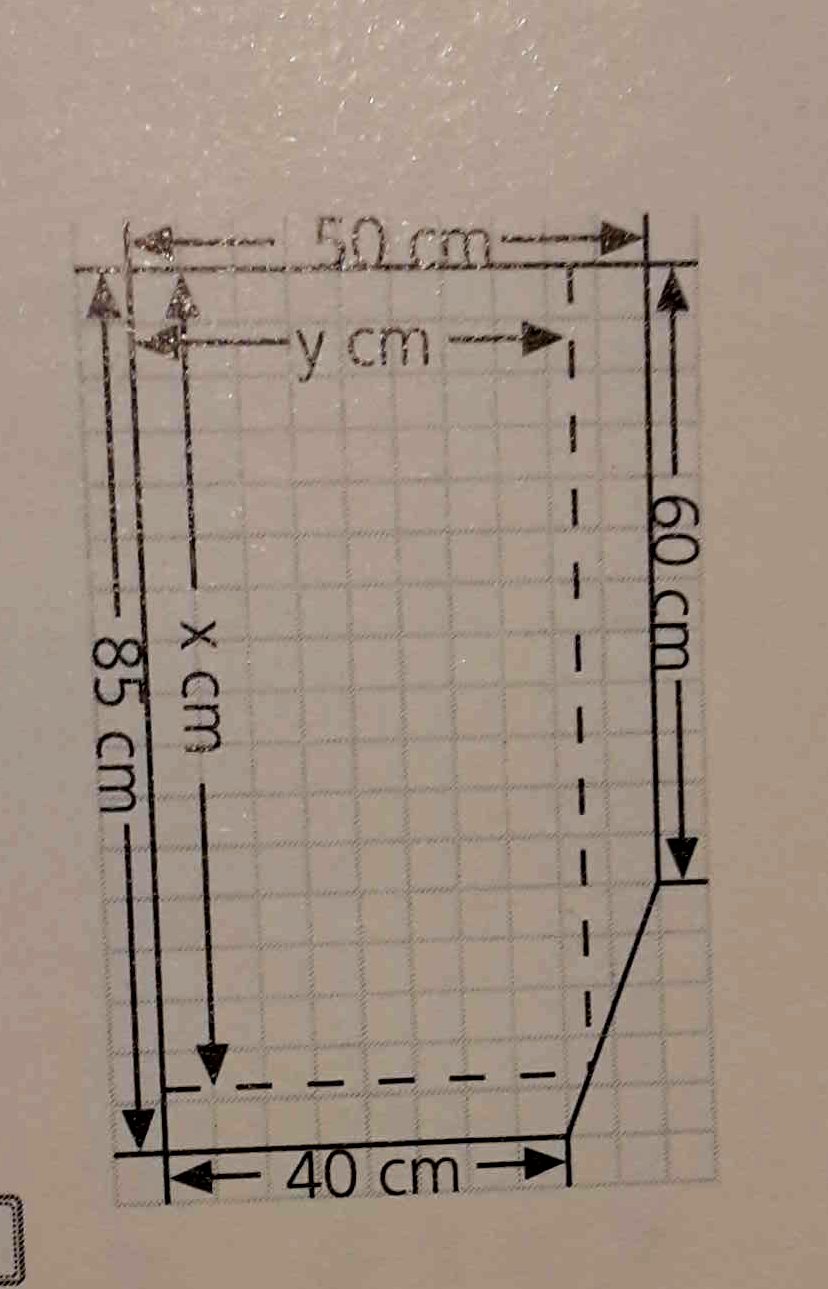Von einer rechteckigen Marmorplatte ist eine Ecke abgebrochen(vgl. Abbild.).
Aus der fünfeckigen Restplatte soll durch Schnitte parallel zu den SEiten des ursprünglichen Rechtecks,
eine möglichst große rechteckige Platte herausgeschnitten werden.
Welche Maße hat diese Platte, und wie viel Prozent der ursprünglichen Plattenfläche nimmt sie ein?

1. Hauptbedingung: Die Fläche der rechteckigen Platte A = xy
2. Nebenbedingung:
\(\begin{array}{llcll} 1) & x \text{ ist nur sinnvoll im Bereich der Schrägen}, \\ & \text{daher ist der Definitionsbereich eingeschränkt auf }60\ cm \le x \le 85\ cm \\\\ 2) & \text{Strahlensatz: } \\ & \begin{array}{rcll} \dfrac{85-x}{10-(50-y)} &=& \dfrac{25}{10} \\\\ \dfrac{85-x}{y-40} &=& \dfrac{5}{2} \\\\ \text{nach $y$ aufgelöst: } \\ y &=& 74 - \dfrac{2}{5}x \\ \end{array} \end{array}\)
3. Zielfunktion:
Die Terme für x und y aus den Nebenbedingungen in die Hauptbedingung einsetzen,
um die Zielfunktion zu erstellen:
\(\begin{array}{rcl} A(x) &=& x\left(74- \dfrac{2}{5}x\right) \\ &=& 74x - \dfrac{2}{5}x^2 \end{array}\)
Die Zielfunktion beinhaltet jetzt nur noch eine Variable, von der die Größe A abhängt.
4. Optimum (hier: Maximum):
\(\begin{array}{lrcll} \text{Ableitungen bilden: } \\ & A'(x) &=& 74 - \dfrac{4}{5}x \\ & A''(x) &=& - \dfrac{4}{5} \\ \text{Extremstelle(n) ermitteln: } \\ & A'(x) &=& 74 - \dfrac{4}{5}x = 0 \quad \Rightarrow \quad x = 92.5\ (\text{Maximum}) \\ \end{array} \)
Der Wert des Extremums x = 92,5 cm liegt außerhalb des zulässigen Bereiches (s.o.)
und kann damit keine Lösung sein. Daher müssen die Ränder des Definitionsbereiches
betrachtet werden, um das globale Maximum in diesem Bereich zu ermitteln:
\(A(60) = 60\ cm \cdot 50\ cm = 3000\ cm^2 \qquad A(85) = 85\ cm \cdot 40\ cm = 3400\ cm^2\)
Damit ist \(x = 85\ cm\) und \(y = 40\ cm\) die gesuchte Lösung.
Die ursprünglichen Plattenfläche war \(85\ cm \cdot 50\ cm = 4250\ cm^2\)
Die neue Fläche nimmt \(\dfrac{3400\ cm^2}{4250\ cm^2} = 0.8\ (80 \%)\) der ursprünglichen Plattenfläche ein.
